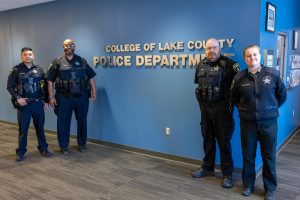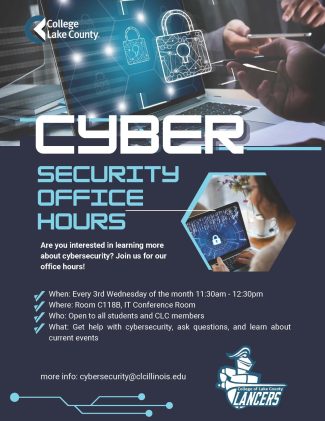STEM educators on adapting to the COVID-19 pandemic online learning environment
April 30, 2021
COVID-19 lockdowns have had a massive impact on STEM professors (Science, Technology, Engineering, and Mathematics), many of whom rely on in-person learning with labs and experiments.
Governor Pritzker’s “Stay at Home” order officially took effect on March 21, 2020, and many of Illinois’ businesses were forced to shut down. CLC had already canceled all of its in-person events and most in-person courses.
The changes were sudden, and CLC professors quickly had to adjust to the online learning format. In an email, CLC Chemistry professor Tara Simmons said that this was her first time teaching online.
Photo by Julia M Cameron
“I had not taught online before, since a lab cannot really be done virtually,” she said.
Another CLC chemistry professor, Dr. Cheryl Kordik, described the process of facilitating labs in a virtual format.
“Laboratory experiences are critical in a science course, and this was probably the hardest change to teaching chemistry during the pandemic,” she said. “CLC faculty developed incredibly good virtual experiments by having a faculty member film themselves doing the experiment. In this way, the student can still see the experimental results and record data.”
Many schools and colleges around the United States moved exclusively to platforms like Blackboard or Canvas in 2020. Dr. Simmons mentioned how the learning management system Canvas is “less of a supplement and now a major communication method.”
Zoom also exploded over the summer, becoming the main meeting platform between teachers and students across the United States.
Dr. Kordik elaborated upon the issues that came along with online synchronous sessions, like maintaining students’ attention.
“In an effort to respect my students’ privacy, I do not require cameras to be turned on during my Zoom Live sessions,” she said. “This, unfortunately, sometimes discourages class participation. It is easier to ‘hide’ on Zoom than in the classroom in-person.”
To keep students engaged, Dr. Kordik said that she as well as other faculty members have become more creative in designing classroom activities.
“My classes will do a Kahoot! review session after each chapter we cover,” she said. “Since Kahoot! is a fun and interactive game, the students seem to like participating.”
COVID-19 lockdowns also forced teachers to adopt online testing and grading. Colleges and universities each implemented their own system to evaluate their students’ learning.
CLC, for example, temporarily added a Pass/Fail policy in which “D” letter grades are converted to P (Pass) and “F” letter grades are converted to N (Requirements Not Fulfilled). This was to prevent students’ GPAs from dropping dramatically as a result of stress that may have been caused by the pandemic.
Photo by cottonbro
While some teachers had already been using online grade books, many who lacked experience with online grading were forced to learn quickly. Dr. Simmons described the process of grading electronically as “surprisingly slower” than grading on paper.
Additionally, Dr. Kordik discussed the various challenges that accompanied online assignments and tests.
“I have struggled developing the best way to deliver my tests and assessments in a satisfactory way that promotes equity and fairness to all my students,” she said. “Each class works with me to develop assessment protocols that [we] all believe will work and are fair.”
The COVID-19 lockdowns brought many changes to the field of STEM, some of which may become permanent.
“The pandemic has been a real challenge to college students and college professors,” Dr. Kordik said. “Everyone has had to learn a great deal of new technology to handle the challenge, and a silver lining to the pandemic is that we have all been forced to adapt, which has resulted in some wonderful new teaching and learning strategies to be developed.”








